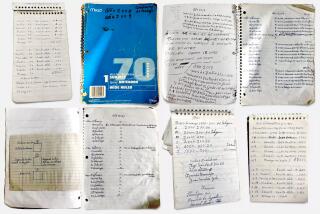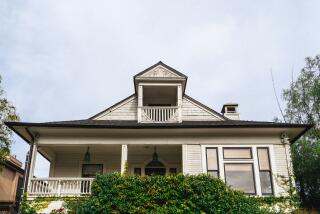Floating into a different world
Trinidad, Bolivia — My eyes widened as I heard the faint ripple across the Río Mamoré. I slowly turned my head and saw the pink backs of two river dolphins bobbing along, curving in and out of the brown water. The creatures were so dissimilar to their ocean counterparts, they didn’t seem related. They were certainly less athletic: Their long, pale pink snouts rarely rose more than a few inches above the river’s surface.
Until that moment, I had taken the quiet for granted as I lounged in a hammock on the top deck of La Reina de Enín, a “Flotel” (floating hotel) cruising this tributary of the Amazon River in northeastern Bolivia. Most of the other Flotel passengers had gone out on a smaller boat excursion to see wildlife while I stayed behind to spend the afternoon reading.
We saw river dolphins on each of the four days we journeyed on the Río Mamoré with Flotel. Like most of the other internationally diverse passengers, my husband, Larry, my daughter, Trinity, and I had come to experience the bio-diversity of the Amazon Basin, seeking an unobtrusive, environmentally friendly way to see its people, flora and fauna.
The Amazon boasts the richest density of species in the world, and on our cruise I was hoping for encounters with turtles, harpy eagles, anacondas, tapirs, manatees, sloths, blue morpho butterflies, squirrel monkeys, yellow macaws, jaguars and other birds, mammals, reptiles and amphibians.
Larry and I went to Bolivia last July with Trinity, who had been a college exchange student in La Paz, the capital. Trinity’s friends had recommended a Flotel cruise, and it seemed perfect for our needs. We didn’t want to take a large, insulated cruise ship on the Amazon, preferring a smaller craft that would take us off the usual tourist route. The decision paid off: La Reina, a colorfully painted catamaran, gave us a close look at the remote Amazon Basin rain forest from a comfortable base.
To start our cruise we flew from La Paz to Trinidad, where we were picked up and shuttled by van and ferry to a small port on the Río Mamoré, the longest and largest river in Bolivia. Capt. Tomás Carderón met us and three other passengers at the port and helped us load our luggage into his small motorboat. The seven of us fit snugly, and off we went, the wind pummeling our faces as we sped downriver.
As we approached La Reina, the passengers already on board greeted us as if we were old friends. After leaving luggage in our cabin, we joined the other travelers -- a Spanish family with two young children, a French couple, a Peruvian woman, two Germans and a Bolivian couple -- and the crew for a lunch of fish, chicken, rice, fresh fruits and flan. Then Carderón explained how Flotel works.
La Reina can accommodate 36 passengers in its 10 triple cabins and four doubles, each with an ingeniously designed private bathroom. The cabins were comfortable, with river views and a generator to provide air-conditioning. I found it easier to sleep on the quiet, steady La Reina than I have on gigantic cruise ships, where wave action and the constant loud engine disturb my dreams.
On our cruise few passengers spent much time in their cabins. There were too many things to do -- hikes, horseback rides, swims and shore excursions on one of La Reina’s six motorboats.
The first time our small craft pulled away from the catamaran, I wasn’t sure what to expect on our jungle hike. We cruised downstream, then pulled up to a riverbank that loomed 10 feet above us. It was dry season, and the Mamoré’s water level had dropped. To reach the bank, we had to balance on a long plank from the boat, then grasp a thick tree root to pull ourselves up the slippery, muddy slope. Then we followed Carderón, who doubled as guide and naturalist, into the rain forest.
Carderón has worked with Flotel for 10 years, seven as La Reina’s captain. He is well versed in Amazonian flora and fauna, and he has a contagious enthusiasm for the natural world.
As part of Flotel’s Ethno-Eco-Tourism program, he took us to visit a Mojeño Indian family, introducing us to the parents and their nine children.
“It is important to see how the people here live,” Carderón had told us on board the ship. “They are very poor and must fight the elements, mosquitoes and disease. When we meet them we appreciate their way of life and see how much they are an integral part of the Amazon.”
The family was as curious about us as we were about them, and through them we learned how they build their open-sided homes of bamboo with palm-leaf roofs and live by subsistence agriculture, much as their ancestors did.
Mojeño and Yuracaré villagers share a part of their lives with Flotel guests and provide horseback rides, canoeing and guided hikes. In return, Flotel contributes to a village fund used for medicine, food, school supplies, clothing and other necessities.
Our field trips were many and varied. On the second day’s expedition, we took the launch to some stairs carved into a cliff, at the top of which a resident from the village of Yuracaré de San Renato waited with saddled horses. He helped us mount Blanco, Chocolate Viejo and La Baya, three mild-mannered horses that carried us through the dense forest past birds of paradise and palm trees. During the two-hour ride, Carderón told us more about the rain forest plants and animals.
We emerged into sunlight and made our way through the savanna toward Estancia El Carmen, a cattle ranch, where we spoke with some of the village children and took turns holding a large parrot as a sow and her piglets paraded past.
Mounting up again, we left the huts behind and crossed a large, mucky field. The slurp of mud against hoofs made me grateful for our horses.
On a nighttime search for caimans (alligators), Carderón shone his flashlight along the riverbank looking for red eyes in the darkness.
He motored closer to shore and suddenly pounced on a 4-foot caiman, which he held up for display, showing us its teeth as part of his mini-lecture on Amazonian reptiles.
Where the wild things are
Another day some of us took a dugout canoe to get a closer look at birds along the river. One evening we hiked to a nature preserve to see hundreds of wild parrots roosting. We could hardly hear one another’s voices for the din as the birds seemed to chat about their day in the jungle.
Some of us chose to view wildlife from the boat, but others were more active, jumping into the river to swim with the river dolphins, hiking through the forest to see monkeys or fishing.
On the bright morning of our third day, crew member Manolo took five of us in the motorboat to a white sand island the length of two football fields. On the way, he pulled over to show us a riverbank that was home to baby caimans.
Manolo had no difficulty finding the place even though it had no distinguishing feature that I could see. Manolo, who had grown up on the river, smiled when I asked how he knew where to pull over. “I just know,” he said.
On the island, Manolo showed us dozens of capybara tracks at the water’s edge. The huge semiaquatic rodents were nowhere to be seen, nor were jaguar and puma, which also call the island home.
Manolo told us to shuffle our feet as we waded into the river to avoid painful encounters with stingrays. Then he took the boat out for a spin, making a circle near our beach.
“This should get rid of the caimans right offshore,” he said.
Stingrays? Caimans?
It took us some time to gather our courage to wade into the Mamoré, but when we did a strong current made it seem as if we were swimming in an endless lap pool.
Swimming was not our only amusement that day. Having heard of the therapeutic powers of the river’s mud, I slathered it on my face, let it dry until caked and then rinsed it off with another swim. After several hours playing in our private natural spa, we zipped back to Flotel, thoroughly content and ready for dinner.
Meals aboard La Reina were hearty and delicious. Breakfasts consisted of fresh fruit, eggs, breads and coffee or tea. At lunch and dinner there were two types of meat, fresh fish, grains, vegetables, bread, fruit and desserts.
Conversation flows like the river
Mealtimes also offered a window to the world as we sat around a huge captain’s table in the dining room or at a smaller table on deck. Only two of the guests were monolingual; some spoke three or four languages fluently, and conversation flowed in several languages, with people translating for others when necessary. We spoke about a fascinating range of topics, from the International Monetary Fund to aid to developing nations, from world religions to Bolivian literature.
Shipboard life was casual, and I loved living without a watch, makeup or an agenda. At times I found myself sitting on deck or lying in a hammock simply enjoying the view and entertained by watching river dolphins or capuchin monkeys scampering from tree to tree or marveling at a snowy egret’s smooth takeoff. I could glimpse a variety of creatures from the boat’s deck, listen to the bird and monkey noises from the trees onshore, or lean back and stargaze at night.
During our cruise we saw no other tourists, though we did see a few dugout canoes and rafts carrying people with lumber, food and other necessities. Only occasional steps carved into the riverbank gave a clue of the people who live within the forest.
By the time La Reina turned into the clear waters of the smaller Ibare River on our way back to Trinidad and the flight home, I had become accustomed to the quiet, slower-paced life of those who live on the river’s edge.
Back in my Malibu home, I pause occasionally in the middle of everyday activities, recalling the wonder of seeing the pinkish-pale river dolphin and our journey.
More to Read
Sign up for The Wild
We’ll help you find the best places to hike, bike and run, as well as the perfect silent spots for meditation and yoga.
You may occasionally receive promotional content from the Los Angeles Times.






